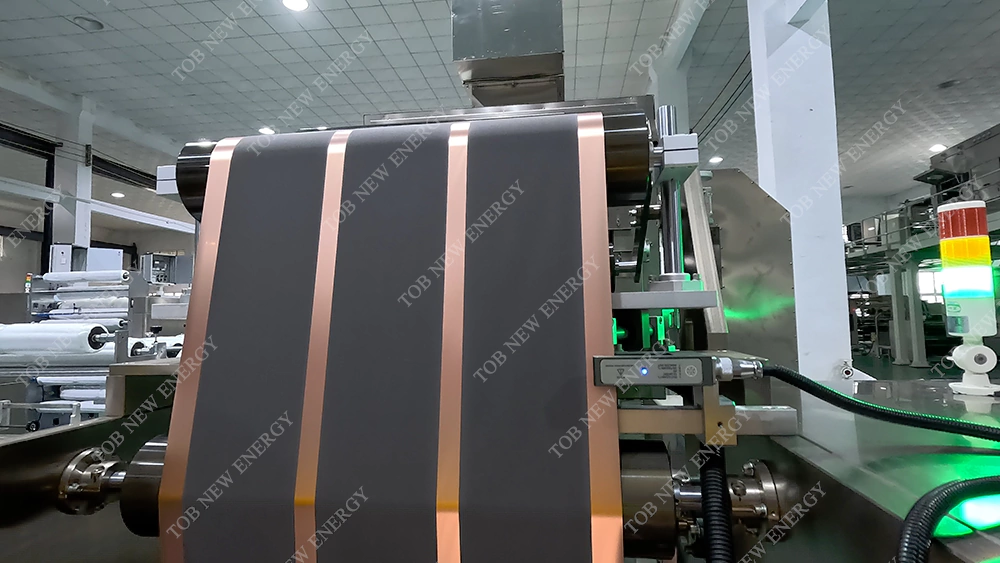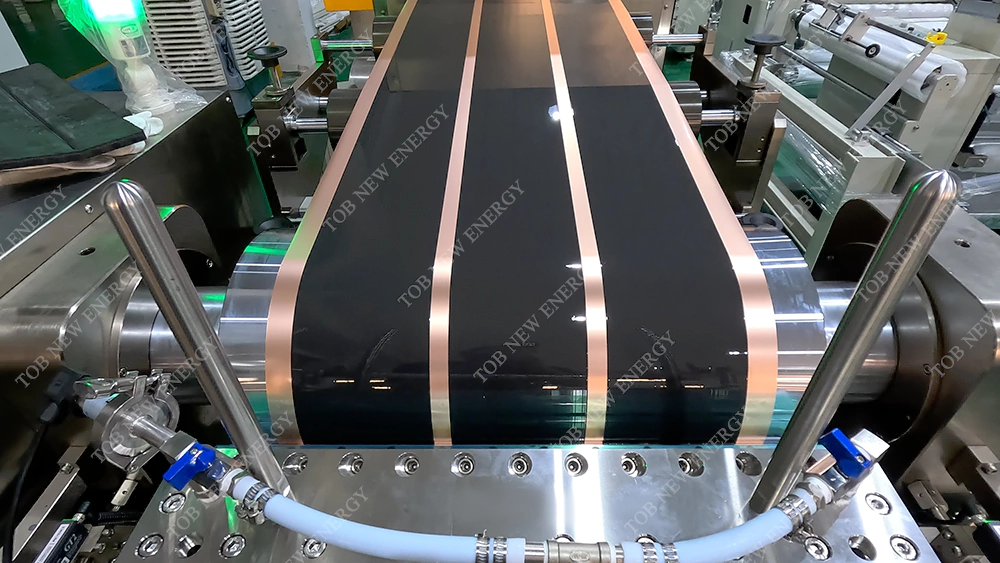Battery electrode coating is a critical process in the manufacturing of batteries, as it affects the performance, efficiency, and quality of the final product. Electrode coating involves the application of a slurry onto a substrate, such as a metal foil or a current collector, to create a uniform and thin layer of active material, such as lithium cobalt oxide, graphite, or silicon, that can store and release energy during charge and discharge cycles. Electrode coating can be achieved through various methods, each with its own principles, features, advantages, and precautions. This article aims to provide an overview of the most common electrode coating methods used in battery production.

Doctor blade coating is a well-established and widely used method that involves the use of a metal blade, called a doctor blade, to scrape off excess slurry and create a smooth and uniform film. Doctor blade coating works by first depositing the slurry onto the substrate, then moving the doctor blade along the surface to even out the thickness and ensure that the active material is evenly distributed. Doctor blade coating is a relatively simple, scalable, and versatile technique that can produce electrodes with high porosity, good adhesion, and low cost. However, it requires precise control of the gap between the blade and the substrate, the speed and angle of the blade, and the viscosity and rheology of the slurry. In addition, doctor blade coating can generate edge defects, striations, and surface roughness, which can affect the electrolyte penetration, the active material utilization, and the cycle life of the battery.
Slot die coating is a newer and more sophisticated method that uses a precision extrusion head, called a slot die, to dispense the slurry onto the substrate through a narrow and adjustable slot. Slot die coating works by precisely controlling the slurry flow rate, pressure, temperature, and shear, as well as the substrate speed and distance from the slot, to achieve a precise and uniform coating. Slot die coating can produce electrodes with high thickness control, reproducibility, and flexibility, as well as low solvent consumption, waste, and contamination. It can also coat multiple layers of different materials in a single pass, such as the anode and cathode sides of a battery, and deposit gradient or patterned coatings. However, slot die coating requires expensive and complex equipment, as well as precise tuning and optimization of the process parameters. In addition, slot die coating can suffer from nozzle clogging, edge buildup, and uneven coating at low speeds or high solids content.

Gravure Coating
Gravure coating is a roll-to-roll method that uses a cylindrical gravure roller, engraved with small cells or pits, to pick up the slurry from a bath and transfer it to the substrate by contact and pressure. Gravure coating works by controlling the depth, shape, and distribution of the cells on the roller, as well as the speed and pressure of the substrate against the roller, to create a uniform and thin coating without excess slurry or surface defects. Gravure coating can produce electrodes with high precision, smoothness, and resolution, as well as low solvent evaporation and air exposure. It can also coat complex geometries, such as three-dimensional electrodes, and achieve high deposition rates. However, gravure coating requires high-quality and wear-resistant rollers, as well as careful design and maintenance of the cell geometry and spacing. In addition, gravure coating can generate horizontal or vertical lines, streaks, and other artifacts from the cell structure or the substrate roughness.
Spray Coating
Spray coating is a non-contact and high-speed method that uses a spray nozzle or a gun to atomize the slurry into droplets and deposit them onto the substrate by momentum and gravity. Spray coating works by adjusting the droplet size, velocity, distribution, and angle, as well as the distance and overlap between the nozzle and the substrate, to create a conformal and porous coating with controlled density and thickness. Spray coating can produce electrodes with high uniformity, conformity, and scalability, as well as low material waste, solvent use, and solvent recovery. It can also coat flexible or curved substrates, and deposit multiple materials in one step. However, spray coating requires careful control of the droplet size and velocity, as well as the spray parameters, to avoid droplet bouncing, agglomeration, or overspray. In addition, spray coating can suffer from poor adhesion, cracking or delamination at high thickness or low temperature.
Screen Printing
Screen printing is a stencil-based method that uses a mesh, usually made of polyester or stainless steel, to transfer the slurry onto the substrate by pressure and capillary action. Screen printing works by coating the mesh with the slurry, then placing it onto the substrate and pressing it with a squeegee or a roller to force the slurry through the openings, or the meshes, onto the substrate in a desired pattern or shape. Screen printing can produce electrodes with high resolution, repeatability, and customization, as well as low cost, material waste, and equipment. It can also print multiple layers or colors, and achieve high aspect ratios. However, screen printing requires precise control of the mesh tension, adhesion, and quality, as well as the slurry viscosity and rheology. In addition, screen printing can suffer from partial or blocked openings, smearing or spreading, and surface roughness.
Conclusion
In summary, battery electrode coating is a crucial step in battery manufacturing that requires careful consideration of the principles, features, advantages, and precautions of different coating methods. Each method has its own strengths and weaknesses, and can offer unique benefits for specific applications or materials. Choosing the right electrode coating method depends on the target performance, the desired throughput, the available resources, and the process requirements. By understanding the pros and cons of different coating methods, battery manufacturers can optimize their production line and improve the quality and reliability of their batteries.